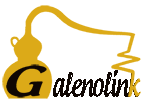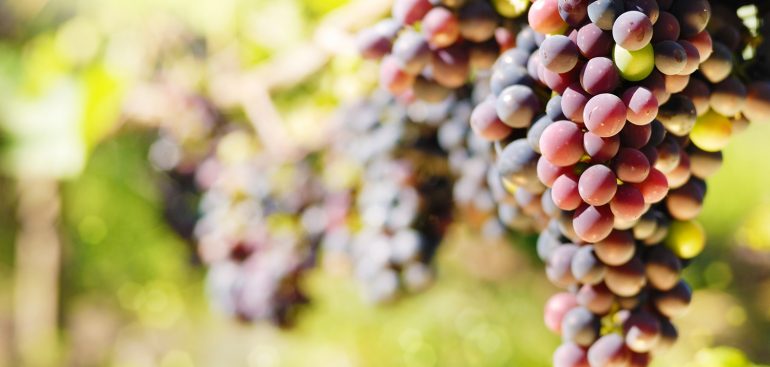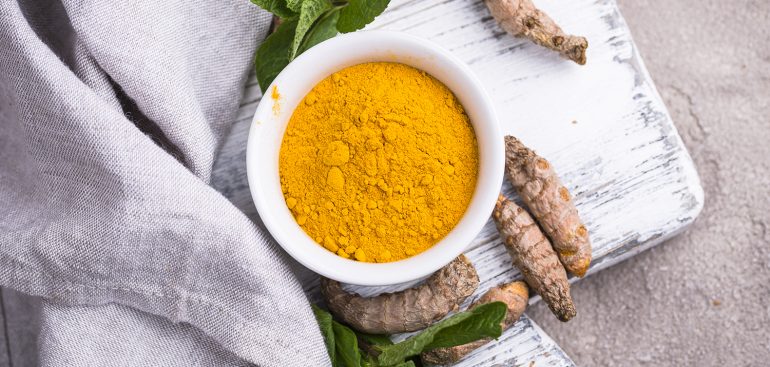Research has shown that oxidative stress is related to a number of diseases in both humans and animals.
Grape derivatives that are marketed as antioxidants are usually by-products of wine production: grapevine cane is used as a source of resveratrol; grape pomace (skin, seeds and lees), which accounts for 15-25% of the weight of the grape, is rich in phenolic compounds; and grape seeds contain proanthocyanidins, omega-6 fatty acids, phytosterols, and vitamin E. The content of antioxidant compounds depends on each grape variety.
An important advantage of antioxidants obtained from grapes is that their bioavailability is high compared to antioxidants obtained from other fruits, thanks to the low content of non-digestible carbohydrates and proteins, and their efficient gastrointestinal delivery.
Beneficial compounds contained in grapes and their biological functions
1. Polyphenols
Polyphenols are one of the most studied groups of secondary plant metabolites, thanks to their potential beneficial effects on human health. More than 8000 different polyphenols have been described, with very different molecular structures, biological effects, and bioavailability. They all have in common the fact that they have phenolic groups and a high antioxidant power.
They are classified as flavonoid (flavonols, flavones, flavanones, isoflavonoids, chalcones and anthocyanins) and non-flavonoid molecules (phenolic acids, stilbenoids and others).
1.1 Flavonoids
Flavonoids are important secondary metabolites that play key roles in protecting plants against stresses. They are derived from the phenylpropanoid biosynthetic pathway, which results in the synthesis of resveratrol, and can be subclassified into flavonols, flavanols, proanthocyanidins, flavones, flavanones, isoflavonoids, chalcones and anthocyanins.
Flavonoids are concentrated mainly in the skin, as they are involved in the protection against UV light, the attraction of pollinators, and the defense against pathogens and predators. Their concentration depends on the berry variety, being higher in red grapes, and the developmental stage of the fruit.
Experimental results indicate that the bioavailability of flavonoids is very low. However, multiple studies confirm their biological effects, so it is hypothesized that they are transformed by the digestive flora into molecules with better bioavailability. Clinical studies in humans confirm their potential to prevent or treat memory decline, obesity, diabetes, and liver diseases.
The most common flavonols in grapes are quercetin, myricetin and rutin. In clinical studies, quercetin has shown potential to reduce cholesterol and blood pressure, as well as the symptoms of prostatitis.
Proanthocyanidins are polymers of flavanols. In the grape, the skin contains proanthocyanidins with a higher polymerization degree and lower bioavailability, while the seed has shorter polymers with better bioavailability. Clinical studies in humans confirm their potential to reduce blood pressure, to decrease the pigmentation in patients affected by chloasma, and to ameliorate the symptoms related to menopause.
Anthocyanins are responsible for the colour of grape berries and their products, such as wine and juice. They are concentrated in the skin of the berry, and are easily oxidized in the by-products obtained from grapes.
1.2 Non-flavonoids
1.2.1 Phenolic acids
Phenolic acids are characterized by the presence of one carboxylic acid, and are found in the plants as conjugates, rarely in free form. In in vitro tests, phenolic acids often show better antioxidant activity than well-known antioxidant vitamins.
Phenolic acids are present in the grape skin, and in lower amounts in pulp and seeds. They form stable pigments in red wine, and contribute to its astringency and bitterness.
They can be divided into two major sub classes:
- Hydroxybenzoic acids: Possess a common structure derived from benzoic acid. They are found in soluble form, conjugated with sugars or organic acids. Grapes contain syringic acid, gallic acid, gentisic acid, ellagic acid, protocatechuic acid and vanillic acid.
- Hydroxycinnamic acids: Derived from cinnamic acids, are found often in plants as simple esters with quinic acid or glucose. Caffeic acid, chlorogenic acid, coumaric acid, sinapic acid, and ferulic acid are present in grapes.
Both in vitro and in vivo experiments with isolated phenolic acids are rare; in most research projects, phenolic acids are used together with other compounds found in grapes.
1.2.2 Stilbenes
Stilbenes are phytoalexins: antimicrobial and antioxidant substances, without a particular chemical structure, that are produced by plants in response to an environmental stress. Resveratrol is the most well-known stilbene, found in the epidermis of the leaves and in the skin of the grapes, particularly when the grapevine is infected with Botrytis cinerea.
Resveratrol’s in vitro properties as anticancer, anti-inflammatory, antiallergic, etc are widely studied. However, due to its poor solubility and low bioavailability, its in vivo activity is not so clear. Until now, resveratrol has shown clinical potential in the following applications: antiaging cosmetics, reduction of cholesterol and blood pressure, and cognitive decline.
2. Lipids
Grape seeds contain up to 16% of lipids, including fatty acids (linoleic, oleic, and palmatic acid), tocopherols, tocotrienols and phytosterols.
The lipid fraction is used as a comestic ingredient, and recent studies show that the supplementation with grapeseed oil improves diseases related to inflammation as well as insulin resistance.
The importance of the right dose
Polyphenols have a double action as reducing and oxidizing agents, depending on the circumstances.
In vitro, polyphenols from grapes show both antioxidant and prooxidant action. In example, an in vitro experiment showed that low concentrations of both grape seed extract and proanthocyanidin B2 reduced the levels of free radicals, while at concentrations 50 to 100 times higher both compounds induced the generation of free radicals.
There is less research about their pro-oxidative action in vivo. A variety of polyphenols, including gallic acid, ellagic acid, quercetin, myricetin, rutin, and resveratrol can act as pro-oxidants, depending on the dose, which is usually considerably higher than the dose required for the antioxidant activity. Other factors include the duration of administration, solubility, chelating behaviour, metal-reducing potential and pH at the site of action.
Generally speaking, their pro-oxidative activity leads to toxic effects, but there are exceptions: achieving toxic levels of free radicals exerts cytotoxic effects against cancer cells and modulates the antioxidant capacity of certain endogenous factors, protecting the body against severe oxidative stress.


